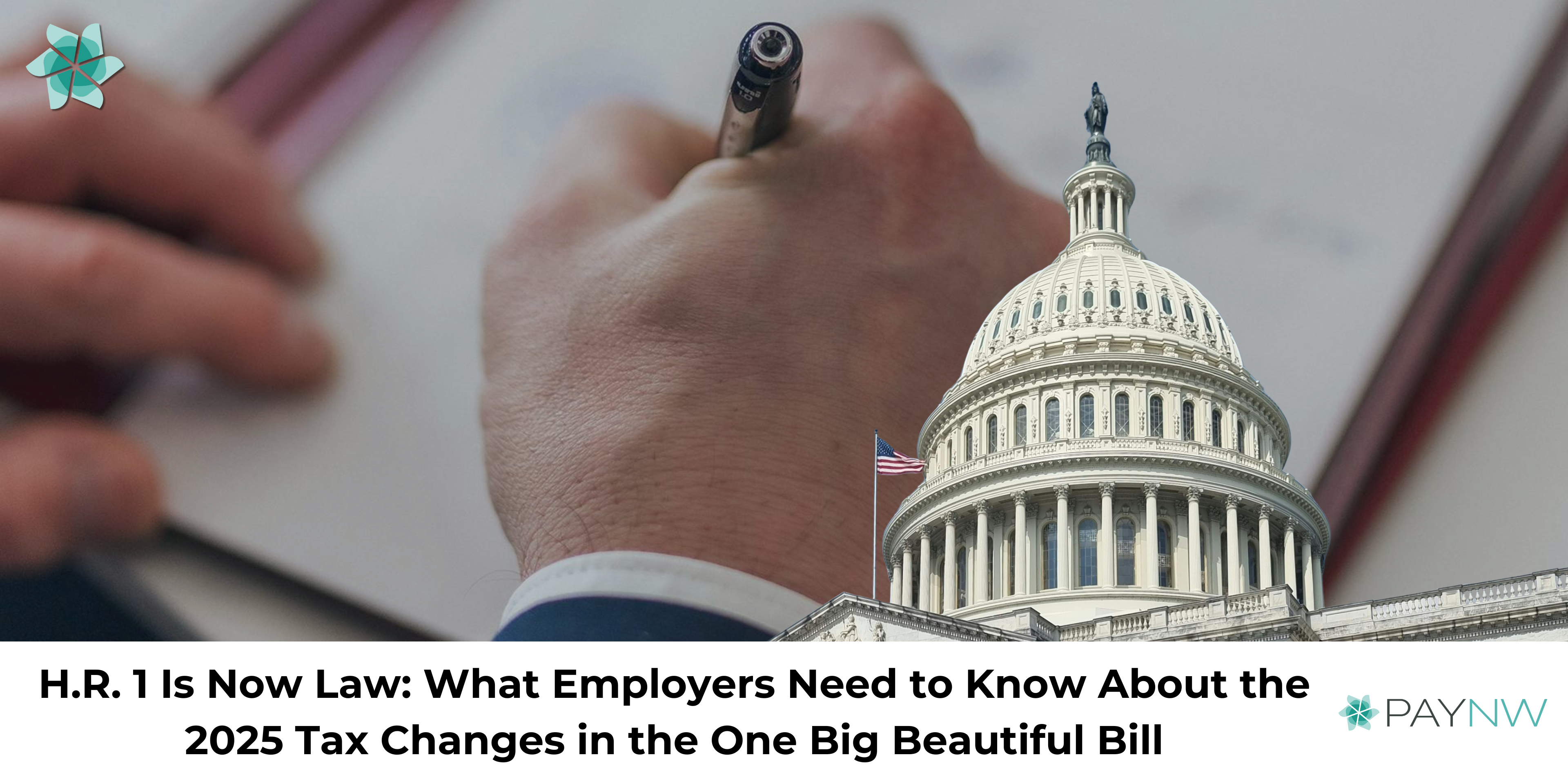4 min read
Washington State Payroll Laws: What Companies Should Know
Processing payroll in Washington State has many components. Before starting to pay employees in the state, you must consider several areas of...
2 min read
PayNW : Jul 10, 2025 2:47:18 PM

H.R. 1 Is Now Law: What Employers Need to Know About the 2025 Tax Changes
On July 4, 2025, President Trump signed into law H.R. 1—the Tax Relief for American Families and Workers Act of 2025. While it’s often referred to by its nickname, the “One Big Beautiful Bill,” the law itself includes important tax and payroll provisions that every employer should understand.
Some provisions are retroactive to January 1, 2025, but no formal guidance has been issued by the IRS yet. Until then, employers are not required to make any changes. This blog breaks down what’s in the bill, what might change, and how to stay prepared.
What’s Included in H.R. 1?
The bill contains a mix of tax adjustments for individuals and businesses. For employers, the most relevant provisions include:
Tax-Free Tips and Overtime — But Only for Employee Tax Returns
Employees may now deduct up to:
However, these are deductions claimed on the employee’s federal tax return. They do not affect employer tax withholding or gross wage reporting.
What This Means for Employers:
No changes to payroll setup or withholding are needed. Wages should still be taxed and reported as usual until IRS guidance says otherwise.
New W-2 Reporting Requirement
Employers will soon be required to separately report overtime premium pay on Form W-2, starting with 2025 wages.
What This Means for Employers:
This is a change to how wages are reported—not how they’re paid. Employers will need to ensure payroll systems can isolate and track overtime premiums for year-end reporting.
Higher 1099 Reporting Threshold
Beginning in 2026, the threshold for issuing a 1099-NEC or 1099-MISC will increase from $600 to $2,000.
What This Means for Employers:
This change will apply to vendor payments starting in 2026 and may require updates to your contractor tracking and year-end processes.
When Do These Changes Take Effect?
But here’s the key: no implementation details have been released yet by the IRS or Treasury Department. Until that happens, employers are not required—or advised—to make any changes.
What Should Employers Do Now?
Want to Stay Ahead Without the Headaches?
Tax law changes like H.R. 1 can create a ripple effect in payroll, reporting, and employee communication. If you're looking for a clearer, more reliable way to navigate what’s next—without adding more to your plate—let’s talk.

4 min read
Processing payroll in Washington State has many components. Before starting to pay employees in the state, you must consider several areas of...

2 min read
There have been many instances where larger, mainstream payroll providers have dropped their cannabis clients due to the inability to manage payroll...

5 min read
All workers in Washington State (WA) are entitled to receive an hourly Minimum Wage rate according to Washington Labor Laws and the Fair Labor...